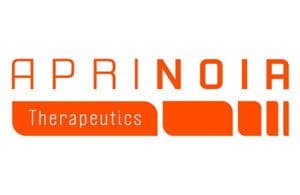 Neurodegenerative disease research is witnessing significant advances. To that end, Hong Kong-headquartered Aprinoia Therapeutics is embracing a ‘precision neuroscience’ approach to neurodegeneration diagnostics. The company’s lead program, APN-1607, represents a new generation of advanced tau positron emission tomography (PET) tracers, which play a crucial role in effective and efficient diagnosis of patients suffering from neurodegenerative disorders.
Neurodegenerative disease research is witnessing significant advances. To that end, Hong Kong-headquartered Aprinoia Therapeutics is embracing a ‘precision neuroscience’ approach to neurodegeneration diagnostics. The company’s lead program, APN-1607, represents a new generation of advanced tau positron emission tomography (PET) tracers, which play a crucial role in effective and efficient diagnosis of patients suffering from neurodegenerative disorders.
Aprinoia Therapeutics’ strategy to neurodegenerative disease research focuses in part on artificial intelligence (AI) and forging strategic collaborations. Paul Tempest, the head of medicinal chemistry at Aprinoia, leads a team of experts in the field of neuroscience, AI, and pharmaceutical development. In a recent interview, Tempest explained how this multifaceted approach supports innovation in the development of novel diagnostic tools and therapies for neurodegenerative diseases.
AI in drug discovery primed to accelerate neurodegenerative disease research
AI has become a core underpinning in Aprinoia’s drug discovery and development strategy. As Tempest noted, “science is always changing,” and we are at an inflection point with advances in AI tools. “The tools are becoming much stronger,” he said. That fact, combined with the growing knowledge and collaborations in the field, offers potential that was unavailable to scientists even in the recent past. Tempest envisions a future where AI will lead to faster turnaround times for the conception of personalized medicine and its translation into treatment.
In late 2020, Aprinoia announced a partnership with Insilico Medicine centered around the use of generative artificial intelligence (AI) technology to help discover novel compounds targeting abnormal proteins in the brain linked with neurodegenerative diseases.
APNmAb005 and Alzheimer’s disease treatment: A promising investigational antibody
APNmAb005, the investigational antibody developed by Aprinoia Therapeutics and their collaborators, has shown promising results in targeting early-stage pathological tau aggregates, which play a critical role in Alzheimer’s disease progression.
In 2022, the company received permission from FDA to test APNmAb005 in a phase 1 single ascending dose study. “We’ve just initiated the phase 1 trial, which we hope to wrap up by the end of this year,” Tempest said. “We plan to start phase 2 in 2024.”
By focusing on early-stage tau aggregates, Aprinoia aims to develop more effective therapeutic strategies to combat Alzheimer’s disease. In both cellular uptake models and mouse studies, APNmAb005 demonstrated potential to mitigate synaptic and neuronal loss without necessarily clearing overall tau levels. This unique characteristic of APNmAb005 suggests that it may offer a novel approach to Alzheimer’s treatment by alleviating tau toxicity towards synapses and neurons. APNmAb005 could thus potentially slow or even prevent the disease’s progression. Further research on the conformation-specific antibody APNmAb005 promises to provide insights into its therapeutic potential and applicability in the context of Alzheimer’s disease and other tauopathies.
Advances in PET tracers for neurodegenerative diseases
Aprinoia has developed several PET tracers that could impact the diagnosis and treatment of neurodegenerative diseases. These include αSyn PET tracers for Parkinson’s disease and multiple system atrophy (MSA), [18F]-APN-1701 for Alzheimer’s and tauopathopathies, and [18F]-APN-1607 (florzolotau (18F)) for Alzheimer’s and tauopathies. The αSyn PET tracer project is being funded by the Michael J. Fox Foundation, Lundbeck, and AbbVie.
Aprinoia is enthusiastic about the potential of these tracers. “The whole area [of tracers] is a very exciting area,” Tempest said. “There are several different uses that we envision that the tracers can be helpful for patients, especially.” He highlights their potential in clinical trials, explaining that tracers can serve as biomarkers for diseases like Alzheimer’s and Parkinson’s, which in turn “allows new therapeutics to be evaluated faster.” Tracers can also help stratify patients more precisely. “Hopefully, [the use of tracers] will make for faster, more efficient clinical trials,” Tempest added.
Furthermore, Tempest emphasizes the value of PET tracers in providing more accurate diagnoses for physicians outside of clinical trial settings, saying, “The second part is just for, you know, outside of a clinical trial setting, just to let physicians have an idea of a more accurate diagnosis.” He also mentions the emergence of blood biomarkers as another exciting development in the field, paving the way for improved diagnostic and treatment options for neurodegenerative diseases.
Collaborations with industry partners: Strengthening research and development
Aprinoia has entered into partnerships with industry leaders such as Biogen, AbbVie, and Lundbeck to bolster its research and development initiatives. These collaborations have influenced the development of diagnostic tools and therapeutics for neurodegenerative diseases. Paul Tempest asserts that being associated with such partners creates a more extensive network of expertise and accelerates the development process.
Earlier this year, Aprinoia entered into a business combination with Ross Acquisition Corp. II, a special purpose acquisition company (SPAC) founded by former Commerce Secretary Wilbur Ross. The deal valued the company at roughly $280 million. In the deal, Ross personally committed funds to help commercialize the company’s lead product, 18F-APN-1607, in China.
Targeted protein degraders: A novel focus in neurodegenerative disease research
Aprinoia’s dual-functional degraders target toxic tau and αSyn aggregates, engaging them with the ubiquitin-proteasome system for degradation while leaving native counterparts untouched, potentially treating tau-related disorders and alpha-synucleinopathies.
The company is investigating the utility of these disease-specific degraders for various disorders and using proprietary diagnostic tools for critical patient selection, as well as exploring alternative degradation pathways like autophagy. “I would really like to have an announcement in 2024 that our protein degradation projects, which are really cutting edge, have gone into humans,” Tempest said.
Filed Under: clinical trials, Drug Discovery, Drug Discovery and Development, machine learning and AI, Neurological Disease, Special Feature



